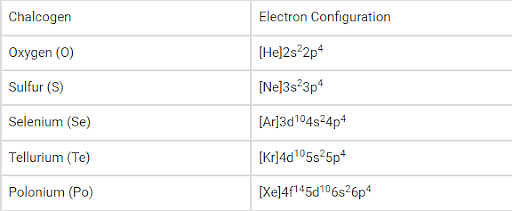In which one of the following arrangements the given sequence is not strictly according to the properties indicated against it
In which one of the following arrangements the given sequence is not strictly according to the properties indicated against it
CO2 < SiO2 < SnO2 < PbO2 :Increasing oxidizing power
HF < HCl< HBr < HI:Increasing acidic strength
H2O < H2S< H2Se < H2Te:Increasing pKa values
NH3 < PH3< AsH3 < SbH3:Increasing acidic character
The Correct Option is C
Solution and Explanation
The question asks which among the given options does not strictly follow the sequence according to the indicated property. Let's analyze each option to determine the correctness:
-
CO2 < SiO2 < SnO2 < PbO2: Increasing oxidizing power
This sequence is based on the oxidizing power of the oxides from Group 14 elements. As we move down the group from CO2 to PbO2, the oxidizing power generally increases. Therefore, this sequence is correct.
-
HF < HCl < HBr < HI: Increasing acidic strength
In binary acids of halogens, the acidic strength increases from HF to HI due to the increase in bond length and decrease in bond dissociation energy. This makes HI the strongest acid, and the sequence is correct.
-
H2O < H2S < H2Se < H2Te: Increasing pKa values
The statement implies that the pKa value increases, suggesting a decrease in acidic strength. However, in reality, H2Te is a stronger acid than H2O, meaning the pKa would decrease down the group. Hence, this sequence is incorrect for increasing pKa values.
-
NH3 < PH3 < AsH3 < SbH3: Increasing acidic character
As we move down Group 15 hydrides, the acidic character increases due to the decrease in bond energy and increase in atomic size, which makes the bond weaker. Thus, this sequence is correct.
Conclusion: The sequence H2O < H2S < H2Se < H2Te: Increasing pKa values does not correctly follow the properties indicated since pKa values should decrease with the increase in acidic strength. Therefore, the correct answer is this option.
Top Questions on p -Block Elements
- Why is PCl\(_5\) a known compound, but NCl\(_3\) is not?
- Bihar Board XII - 2025
- Chemistry
- p -Block Elements
- Which acid is the strongest: HF, HCl, HBr, HI?
- AIIMS Paramedical - 2025
- Chemistry
- p -Block Elements
- Oxidation numbers of oxygen in H_2O_2 and H_2O:
- AIIMS Paramedical - 2025
- Chemistry
- p -Block Elements
Given below are two statements.

In the light of the above statements, choose the correct answer from the options given below:- JEE Main - 2025
- Chemistry
- p -Block Elements
Given below are two statements:
Statement I: Nitrogen forms oxides with +1 to +5 oxidation states due to the formation of $\mathrm{p} \pi-\mathrm{p} \pi$ bond with oxygen.
Statement II: Nitrogen does not form halides with +5 oxidation state due to the absence of d-orbital in it.
In the light of the above statements, choose the correct answer from the options given below:- JEE Main - 2025
- Chemistry
- p -Block Elements
Questions Asked in NEET exam
A sphere of radius R is cut from a larger solid sphere of radius 2R as shown in the figure. The ratio of the moment of inertia of the smaller sphere to that of the rest part of the sphere about the Y-axis is :

- NEET (UG) - 2025
- Moment Of Inertia
A constant voltage of 50 V is maintained between the points A and B of the circuit shown in the figure. The current through the branch CD of the circuit is :

- NEET (UG) - 2025
- Current electricity
The current passing through the battery in the given circuit, is:

- NEET (UG) - 2025
- Current electricity
- Two gases A and B are filled at the same pressure in separate cylinders with movable pistons of radii \(r_A\) and \(r_B\) respectively. On supplying an equal amount of heat to both the cylinders, their pressures remain constant and their pistons are displaced by 16 cm and 9 cm respectively. If the change in their internal energies is the same, then the ratio \(r_A / r_B\) is:
- NEET (UG) - 2025
- Thermodynamics
Given below are two statements:
Statement I: The primary source of energy in an ecosystem is solar energy.
Statement II: The rate of production of organic matter during photosynthesis in an ecosystem is called net primary productivity (NPP).
In light of the above statements, choose the most appropriate answer from the options given below:- NEET (UG) - 2025
- Ecosystems
Concepts Used:
Group 16 Elements
The group 16 elements (oxygen group elements) of the periodic classification are also known as chalcogens because most of the copper ores have copper in the form of oxides and sulphides. The word chalcogen means “ore formation” which is derived from the Greek word “Chalcos” (Ore) and “gen” (formation).
There are 5 elements that come under Group 16 of the Modern Periodic Table namely:
- Oxygen (O)
- Sulphur (S)
- Selenium (Se)
- Tellurium (Te)
- Polonium (PO)
Electronic Configuration:
The general electronic configuration of the chalcogens can be written as ‘ns2np4’, where ‘n’ denotes the value of the principal quantum number corresponding to the valence shell of the element.

The electron configuration of the synthetic element livermorium (believed to be a chalcogen) is predicted to be [Rn]5f146d107s27p4.
Metallic Nature of the Group 16 Elements:
- Oxygen and sulfur are classified as non-metals.
- Selenium and tellurium are classified as metalloids.
- Under standard conditions, polonium exhibits metallic characteristics. However, it is important to note that polonium is a radioactive element.